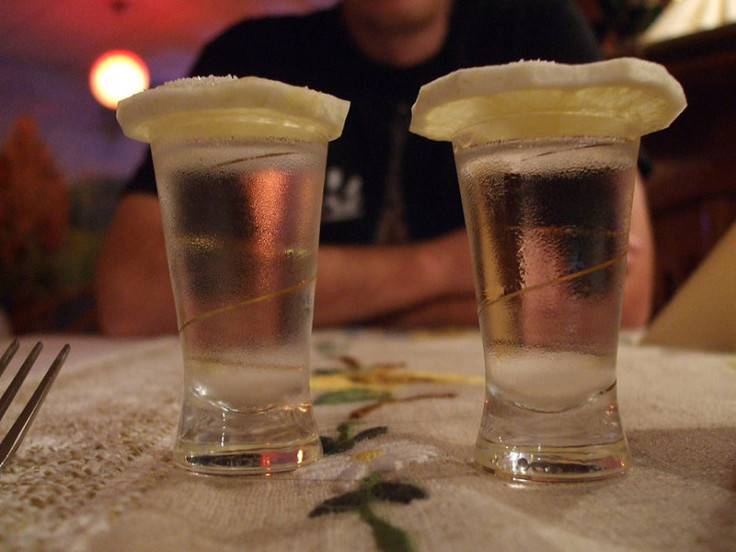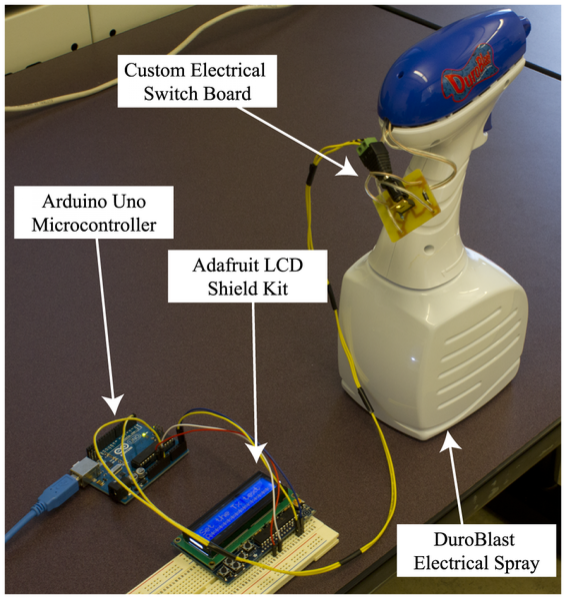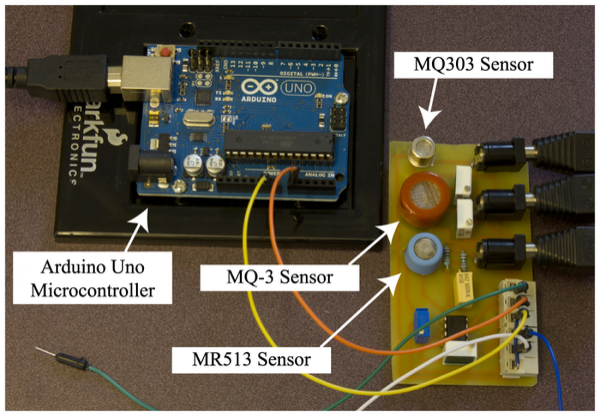‘World’s First’ Text Message Sent Using Vodka, New Technology Transmits Binary Signals In Molecules [PHOTOS]

Vodka may have a second purpose besides being used in your favorite cocktail.
A team of British and Canadian researchers have developed a new way to send messages using the alcoholic beverage. The new molecular communications system is aimed at transmitting messages in challenging environments like tunnels, pipelines and oil rigs.
The findings, published in the open access journal PLOS ONE, describe how scientists used a desk fan and mist of alcohol to transmit evaporated molecules that were translated into binary signals and decoded by a breathalyzer device.
"We believe we have sent the world's first text message to be transmitted entirely with molecular communication, controlling concentration levels of the alcohol molecules, to encode the alphabets with single spray representing bit 1 and no spray representing the bit 0," York University doctoral candidate Nariman Farsad, who led the experiment, said in a press release.
The first message was 10101100111000101011110110, or “O Canada,” from the country’s national anthem. It was sent over several feet in an open space where it was decoded by a receiver – similar to a police Breathalyzer -- which is made from common electronics and costs around $100.


Each letter was represented by a spray or a pause and given two speeds. The team found that one spray every five seconds, or 25 seconds per letter gave the most reliable results. While the new technology won’t replace any mainstream devices like cell phones, scientists predict it can be used in “niche” markets like monitoring sewers or other underwater environments, the National Post reports.
“What we’re imagining is, instead of that, you send in self-propelled robots,” Prof. Andrew Eckford of York University said. “Hopefully you could get them to communicate using these chemical messages.”
The technology can also work on a microscopic scale.
“For example in medicine where recent advances mean it's possible to embed sensors into the organs of the body or create miniature robots to carry out a specific task such as targeting drugs to cancer cells,” Dr. Weisi Guo from the School of Engineering at the University of Warwick said. "On these tiny scales and in special structural environments, there are constraints with electromagnetic signals such as the ratio of antenna size to the wavelength of the signal, which chemical communication does not have.”
The team has decided to set up a company to advance the new technology and bring products to market.
“By providing a simple and inexpensive means of performing experiments, our system fills an important gap in the molecular communication literature,” the study states. “Furthermore, this work motivates future studies on more realistic modelling, analysis, and design of theoretical models and algorithms for these systems.”
© Copyright IBTimes 2024. All rights reserved.






















